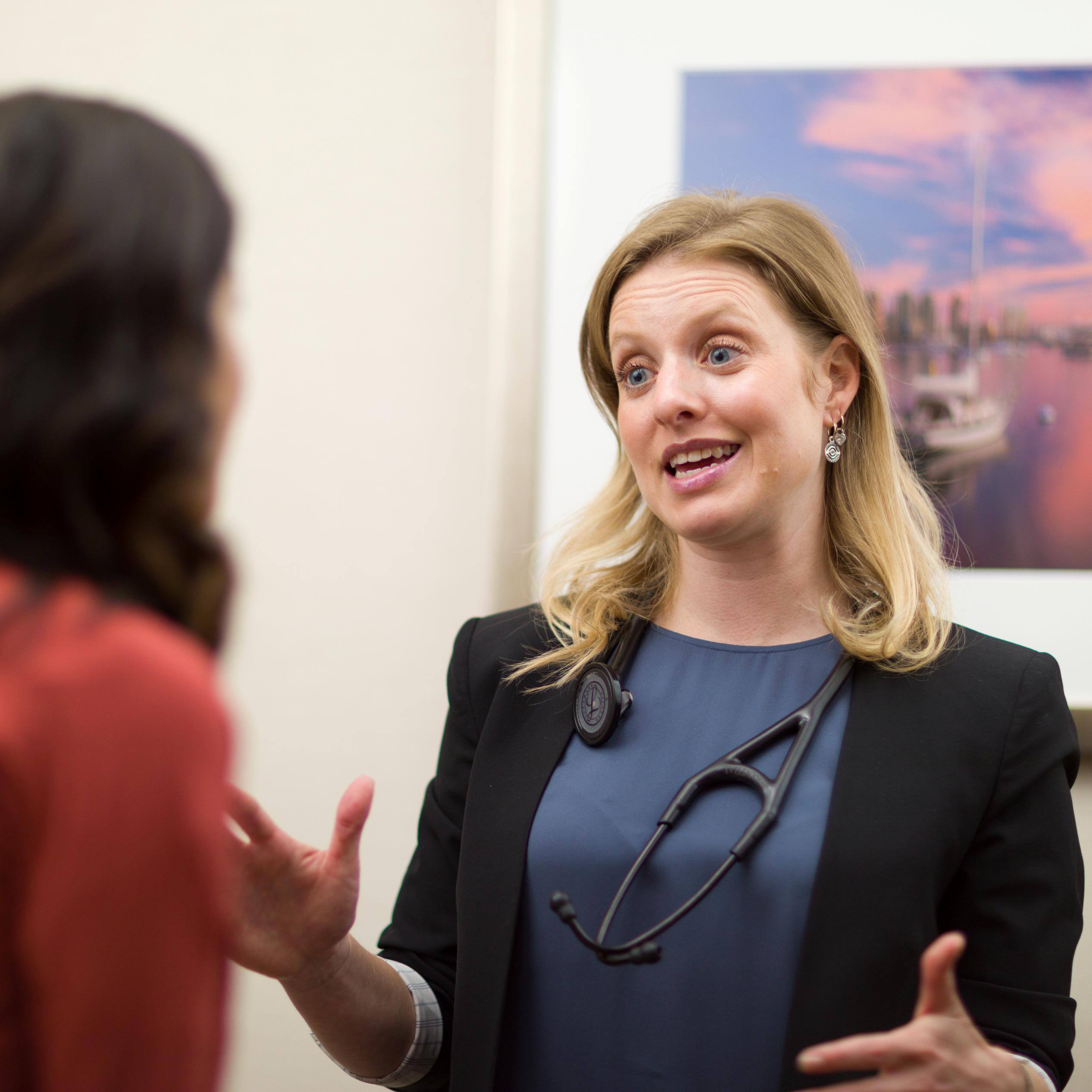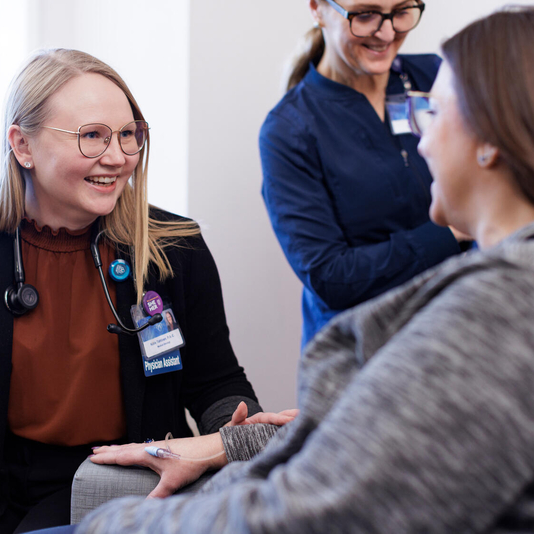-
Women with past adverse childhood experiences more likely to have ovaries removed, study shows
 ROCHESTER, Minn. —Mayo Clinic researchers report that women who suffered adverse childhood experiences or abuse as an adult are 62 percent more likely to have their ovaries removed before age 46. These removals are for reasons other than the presence of ovarian cancer or a high genetic risk of developing cancer, says the new study published today in BMJ Open.
ROCHESTER, Minn. —Mayo Clinic researchers report that women who suffered adverse childhood experiences or abuse as an adult are 62 percent more likely to have their ovaries removed before age 46. These removals are for reasons other than the presence of ovarian cancer or a high genetic risk of developing cancer, says the new study published today in BMJ Open.
In previous studies examining the effects of removing the ovaries of younger women, the research team has demonstrated a myriad of health risks resulting from ovary removal.
“Our current findings suggest that physical, emotional or sexual abuse predisposes women to seek medical attention for multiple gynecological symptoms, such as abdominal pain or excessive bleeding,” says Liliana Gazzuola Rocca, M.D., a Mayo Clinic health sciences researcher and psychiatrist. “These gynecological symptoms may lead the women and their gynecologists to opt for removal of the reproductive organs at a young age ─ even when these organs are completely normal.”
“Unfortunately, in most cases, these early life experiences are inaccessible to the women because of psychological mechanisms, and the gynecologists may not be aware of the important connection between early life experiences and the present symptoms. This inability to recognize and openly discuss the past history of abuse may lead to unnecessary and harmful surgeries.”
“We want to discourage surgeons from offering ovary removal as a cancer prevention option for women who don’t have ovarian cancer or the genetic variants that are likely to cause it,” she continues. “Removing both ovaries in premenopausal women can cause depression, hyperlipidemia, cardiac arrhythmias, coronary artery disease, arthritis, asthma, chronic obstructive pulmonary disease and osteoporosis – all conditions which weigh heavily against indiscriminate ovary removal.”
These other ovary-removal related issues were discovered in previous research were described in a 2016 news release.
Bilateral oophorectomy is the formal term for removal of both ovaries, generally used as a preventive measure against ovarian cancer. Oftentimes surgeons performing a hysterectomy to eliminate various noncancer health issues offer to remove a woman’s ovaries to prevent against ovarian cancer.
In the current study, Dr. Gazzuola Rocca’s study team examined the medical records of 128 women younger than 46 who received a bilateral oophorectomy in Olmsted County, Minnesota, from 1988 to 2007. The group did not include women with ovarian cancer, those with no available medical history dating to age 15 or earlier, or those with severe intellectual disability. The researchers compared these women to another group of age-matched women who did not have their ovaries removed. All study records are part of the Rochester Epidemiology Project, a medical records linkage collaboration in Minnesota and Wisconsin.
The researchers found that women who reported having experienced physical, verbal, emotional or sexual abuse any time prior to their surgery date were 62 percent more likely to have their ovaries removed than women who had not reported any previous abuse. The team categorized the abuse using a derivation of the Adverse Childhood Experiences questionnaire matched with information in the medical records.
“These findings add to the body of knowledge showing that a person’s experience of abuse, violence or neglect can have far-reaching negative effects on multiple body parts and functions,” says Stephanie Faubion, M.D., an internist, women’s health specialist and study co-author. “It’s actually not that unexpected to find that abuse is connected to reproductive system difficulties. There are a number of studies showing psychological and physiological links.”
“What is concerning, however, is the fact that, although associations exist, adverse experiences and abuse do not appear to have been part of the physician-patient conversation when the decision was made to remove the essential estrogen-producing ovaries,” she says.
While each situation is unique, the authors believe that understanding the connection between the earlier trauma and later gynecological symptoms could give patients and their health care providers other avenues to treat gynecological problems.
Using medical and dental records in the Rochester Epidemiology Project, researchers can identify what causes diseases and how patients with certain diseases respond to surgery, medication or other interventions. They also can determine what the future is likely to include for patients with specific diseases or medical conditions, such as predicting the health and well-being of women following ovary removal.
Co-authors ─ all from Mayo Clinic ─ are:
- Walter Rocca, M.D.
- Carin Smith
- Brandon Grossardt
- Lynne Shuster, M.D.
- Elizabeth Stewart, M.D.
Dr. Faubion is the director of Mayo Clinic’s Office of Women’s Health, which co-sponsored this research. Dr. Rocca is the co-director of the Rochester Epidemiology Project. The Rochester Epidemiology Project receives administrative and financial support from the Mayo Clinic Robert D. and Patricia E. Kern Center for the Science of Health Care Delivery.
###
About the Rochester Epidemiology Project
The Rochester Epidemiology Project is a collaboration of clinics, hospitals, and other medical and dental care facilities in southern Minnesota and western Wisconsin. Founded by Mayo Clinic and Olmsted Medical Center in 1966 in Olmsted County, Minnesota, the collaboration now stretches across 27 counties and includes Olmsted County Public Health Services as its first public health member. This collaboration and sharing of medical information makes this area of Minnesota and Wisconsin one of the few places where true population-based research can be accomplished. For more information about the Rochester Epidemiology Project, view its new historic timeline or visit the Rochester Epidemiology Project website.
About Mayo Clinic
Mayo Clinic is a nonprofit organization committed to clinical practice, education and research, providing expert, whole-person care to everyone who needs healing. For more information, visit mayoclinic.org/about-mayo-clinic or newsnetwork.mayoclinic.org.
MEDIA CONTACT
Elizabeth Zimmermann Young, Mayo Clinic Public Affairs, 507-284-5005, newsbureau@mayo.edu
Journalists: Video soundbites with Dr. Faubion are available in the downloads.







